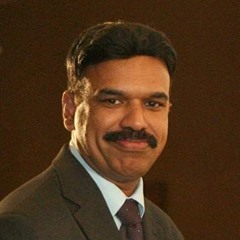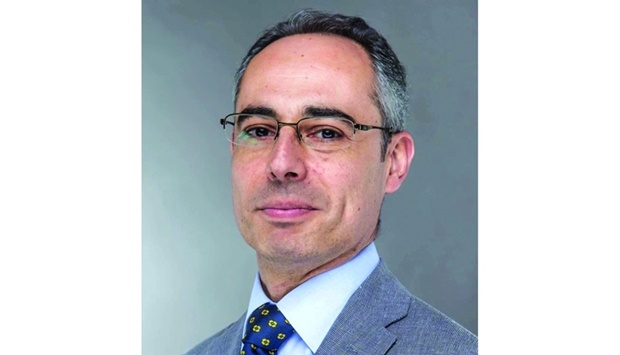A Qatar Foundation ( QF) economist is working on a new energy systems model that will help Qatar reach its GHG (Greenhouse gas) emissions targets to mitigate climate change.
Through a project awarded by QF’s Qatar National Research Fund, in collaboration with Imperial College London, he is currently working on developing Qatar’s first energy systems model in collaboration with, stakeholders in government, industry, and research.
“The model will help identify energy transition pathways that the country can use to create a road map to reach its aim of 25% reduction in GHG emissions by 2030, and chart the course for further emissions reduction by 2050 and beyond,” said, Dr Marcello Contestabile, principal economist at Qatar Environment and Energy Institute, part of QF’s Hamad Bin Khalifa University.
“Using the model, we can set a target for decarbonisation, and then the model helps work out how to achieve that target and the most cost-effective technologies to invest in, taking into consideration all the relevant uncertainties,” explained Dr Contestabile, according to an article published on the QF website.
The main purpose of this project is to equip Qatar with a tool to support policymaking and strategic planning concerning its energy, economic, and environmental policy goals. The model will help identify the mix of technologies that can reduce emissions most effectively both in terms of quantity as well as cost effectiveness, and so on.
“The type of model we are developing is called TIMES,” Dr Contestabile said. “It is the most used model worldwide and will allow us to equip Qatar with the same capabilities for performing energy systems analysis as leading governments and institutions around the world.”
The expert continued: “To support a country in planning the transformation of its energy system, a vital tool is an energy systems model. To mitigate climate change, we need a major transformation of the global energy system – one that is unparalleled in its speed and scope.”
“Energy systems consist of distinct but interlinked sectors such as power generation, transport, buildings, and industry. Achieving carbon emission reductions requires intervening on all these sectors simultaneously, while taking the complex nature of the system into due consideration to avoid unintended consequences,” he remarked.
The expert noted that energy systems models compute costs, fuel consumption, and emissions for each sector over time, and help identify optimal paths for reaching the desired policy targets through the transformation of the energy system, taking all relevant constraints into account.
Emphasising the need for such a model to kickstart change, Prof Adam Hawkes, director of the Sustainable Gas Institute and Professor of Energy Systems in the Department of Chemical Engineering at Imperial College London, said: “Qatar is in an enviable position to create an energy system and industrial sector that are aligned with Paris Agreement targets.
“The energy systems model we are building in this project is a tool for all stakeholders in Qatar to understand and ask questions of what that future could look like. It can give crucial information to policymakers and industry alike, enabling all to explore the impact of energy strategies for the future,” added, Prof Hawkes.
According to Dr Contestabile, the value this project can bring to the country’s climate mitigations plans is significant, but it will depend heavily on the level of stakeholder engagement.
One of the project’s partners is Kahramaa. As part of their Tarsheed programme, Kahramaa is co-ordinating the deployment of new technology such as solar photovoltaics and related energy storage capacity to manage intermittency, smart grids, electric vehicles, and related charging infrastructure, and more.
The model – once developed – with its ability to test different strategies to achieve policy targets will serve as an essential analytical tool in supporting Kahramaa maximise the benefits of deploying low-carbon technologies that are energy-efficient.
Through a project awarded by QF’s Qatar National Research Fund, in collaboration with Imperial College London, he is currently working on developing Qatar’s first energy systems model in collaboration with, stakeholders in government, industry, and research.
“The model will help identify energy transition pathways that the country can use to create a road map to reach its aim of 25% reduction in GHG emissions by 2030, and chart the course for further emissions reduction by 2050 and beyond,” said, Dr Marcello Contestabile, principal economist at Qatar Environment and Energy Institute, part of QF’s Hamad Bin Khalifa University.
“Using the model, we can set a target for decarbonisation, and then the model helps work out how to achieve that target and the most cost-effective technologies to invest in, taking into consideration all the relevant uncertainties,” explained Dr Contestabile, according to an article published on the QF website.
The main purpose of this project is to equip Qatar with a tool to support policymaking and strategic planning concerning its energy, economic, and environmental policy goals. The model will help identify the mix of technologies that can reduce emissions most effectively both in terms of quantity as well as cost effectiveness, and so on.
“The type of model we are developing is called TIMES,” Dr Contestabile said. “It is the most used model worldwide and will allow us to equip Qatar with the same capabilities for performing energy systems analysis as leading governments and institutions around the world.”
The expert continued: “To support a country in planning the transformation of its energy system, a vital tool is an energy systems model. To mitigate climate change, we need a major transformation of the global energy system – one that is unparalleled in its speed and scope.”
“Energy systems consist of distinct but interlinked sectors such as power generation, transport, buildings, and industry. Achieving carbon emission reductions requires intervening on all these sectors simultaneously, while taking the complex nature of the system into due consideration to avoid unintended consequences,” he remarked.
The expert noted that energy systems models compute costs, fuel consumption, and emissions for each sector over time, and help identify optimal paths for reaching the desired policy targets through the transformation of the energy system, taking all relevant constraints into account.
Emphasising the need for such a model to kickstart change, Prof Adam Hawkes, director of the Sustainable Gas Institute and Professor of Energy Systems in the Department of Chemical Engineering at Imperial College London, said: “Qatar is in an enviable position to create an energy system and industrial sector that are aligned with Paris Agreement targets.
“The energy systems model we are building in this project is a tool for all stakeholders in Qatar to understand and ask questions of what that future could look like. It can give crucial information to policymakers and industry alike, enabling all to explore the impact of energy strategies for the future,” added, Prof Hawkes.
According to Dr Contestabile, the value this project can bring to the country’s climate mitigations plans is significant, but it will depend heavily on the level of stakeholder engagement.
One of the project’s partners is Kahramaa. As part of their Tarsheed programme, Kahramaa is co-ordinating the deployment of new technology such as solar photovoltaics and related energy storage capacity to manage intermittency, smart grids, electric vehicles, and related charging infrastructure, and more.
The model – once developed – with its ability to test different strategies to achieve policy targets will serve as an essential analytical tool in supporting Kahramaa maximise the benefits of deploying low-carbon technologies that are energy-efficient.



